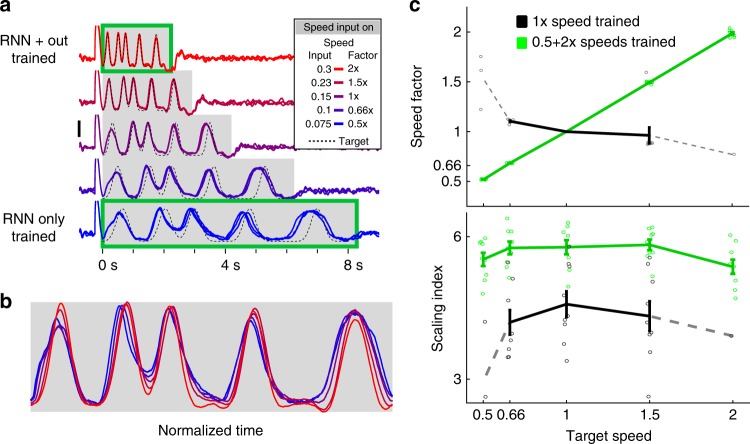Fig. 3.
RNNs trained at multiple speeds exhibit robust temporal scaling. a Output activity of an RNN trained to produce the scaled patterns of recurrent activity at 0.5× (ySI = 0.075) and 2× (ySI = 0.3) speeds. The output was trained only at the 2× speed. After training (weight modifications stopped), the network was tested at different input speed levels (ySI = [0.075,0.1,0.15,0.23,0.3])—corresponding to speeds of 0.5, 0.66, 1, 1.5, and 2×. Three example test trials at each speed are overlaid. b One trial from each test speed above shown with time normalized to the end of the active period. c Networks (n = 10) trained at two speeds generalize to untrained speed inputs. Top: The speed factor (the mean ratio of the final tap at each speed to the mean final tap time at 1× speed over 20 trials) of networks trained at two speeds (green), and one speed (black). Bottom: The scaling index of networks trained on two speeds is higher than those trained on one speed. Error bars represent SEM (N = 10), and circles show the value for each network. Because the activity of the one-speed networks degrades at more extreme speeds as shown in Fig. 1, many networks did not produce detectable taps (output peaks) at extreme speeds and we, therefore, could not calculate a scaling index or index for them. We show in dotted lines the values for the networks that completed at least one trial at the extreme speeds

